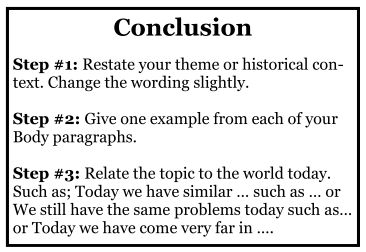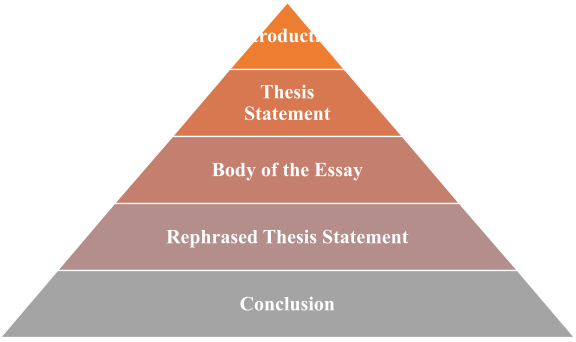What is the Conclusion?
Conclusions are frequently viewed as the most challenging section of an essay to write. They are, nevertheless, one of the most critical components of work because they bring clarity and insight into the subject. We’ll guide you on how to write a conclusion and offer you an outline to utilize in your next essay in this article.
The conclusion section is your last chance to convince your readers to agree with you and to make an impression on them as an expert writer. And the impression you leave with your readers after they’ve finished the essay will be shaped by the impression you leave with them in the conclusion. As a result, the conclusion of an essay should express a sense of completion and end for the subject.
Empower your academic journey with Assignmentstudio’s Business Accounting Assignment Help. Our professional tutors provide invaluable guidance, ensuring students grasp key concepts and excel in their coursework with confidence and proficiency.
What is the Conclusion?
In a research paper, essay, or article, the conclusion is the closing piece of writing that summarizes the entire topic’s efforts. The conclusion paragraph should restate your thesis statement, review the major supporting concepts covered throughout the paper, and give your last thoughts on the central idea. The main idea of your topic should also be included in this final summary. The “so what” is addressed in the conclusion by emphasizing the essay’s argument and providing the reader with a solution and query into the subject matter that supports why they should care.
Outline of the conclusion
- The first sentence
The Thesis statement is rephrased with an original topic sentence.
- Supporting sentences
Summarize the important arguments in the body of the essay
Explain how the concepts fit together.
- Closing sentence
Returns to the beginning
Brings the story to a close

How to write a Conclusion Paragraph?
Every type of writing ends with a conclusion. When a reader reaches the end of your work, a good conclusion paragraph can change their minds, and knowing how to create a complete, interesting conclusion can improve the effectiveness of your writing.
- You’ll leave your reader with a concluding paragraph that “wraps up” your essay.
- It displays to the reader that you have completed what you set out to do
- It explains how you have proven your thesis statement
- It’s the total opposite of the first paragraph of your essay.
- Keep in mind that the starting of your conclusion begins generic and finishes specifically.
How to write a Conclusion for An Essay?
The final paragraph of your paper is the conclusion. A good conclusion tries to tie together the essay’s main ideas, demonstrate why your argument is important, and make a lasting impact on the reader. Your conclusion should provide your argument a sense of closure and completion while simultaneously demonstrating what new issues or possibilities it has raised.
So, if we utilize shapes to show the content of the essay, it would look like this:

-
- Your thesis statement should be summarized in your topic sentence.
- Rephrase the thesis statement to reflect a new and deeper understanding.
- Your concluding sentences should restate what you’ve already expressed in your essay’s body.
- In the conclusion paragraph, summarize the theme of each body paragraph.
- Your final phrase should make your readers happy that they took the time to read your report.
How to write a Good Conclusion?
Knowing how to write a good conclusion is relatively apparent, depending on the length of your essay—you don’t want to simply summarize everything you wrote. Rather, the ending should provide a sense of conclusiveness while also addressing the topic’s meaning and potential.
Here are five crucial points to consider when creating a good conclusion that will stay with the reader:
-
- Start with a topic sentence. The first sentence in a conclusion should always be a topic sentence. Restating your opening paragraph’s thesis in the first line of your conclusion is a good method to remind the reader of the main topic.
- As a starting point, refer to your introduction paragraph. The thesis statement from your introduction, as well as supporting points, emotional request, and final impression, should all be included in the conclusion paragraph. When writing your conclusion, use the introduction as a guide, but don’t rewrite it with different wording.
- Write a summary of the important points. Effective conclusions will repeat the most appropriate material in order to summarize the paper’s main point. Because academic essays and research papers can be extensive, a quick overview of all your supporting points should be included in your final paragraph to keep the reader up to date. It’s best not to use new facts, future research, or fresh concepts, as this may cause the reader to become confused.
- Attracts the emotions of the reader. A good conclusion will use emotional language to inspire the reader with a powerful, long-lasting image. Using an emotional attraction to reinforce your main ideas is also a good idea.
- Finish with a sentence. Your concluding line should wrap up your entire work with a synthesis of important details. Write your concluding argument concisely and clearly, giving the reader closure while also leaving them with a strong feeling of its significance in a greater perspective.
How to write a Research Paper Conclusion?
The conclusion of a research paper is the section that links everything together in a logical manner. A conclusion, as the final section of a research paper, gives a clear explanation of your research’s findings in a way that emphasizes the value of your research.
You can use the stages below to help you start drafting your conclusion:
- Instead of summarizing, synthesize
- Restating the Introduction
- Changing the reader’s focus
- Explain the importance of the findings.
- Posing Questions
- Bring your ideas to a close.

Instead of summarizing, Synthesize
Your research paper’s conclusion is not a summary. While a summary can be included in this part, the conclusion is more than just a restatement of your arguments and analysis. Rather than repeating what you discussed in the abstract, introduction, and body of your study, show the reader how the important arguments of your research paper fit together in a logical way.
Restating the Introduction
The way to write the conclusion brings your reader full idea by including the same components you used in your introduction. Retelling the main idea you mentioned in your introduction while establishing a fresh understanding of the issue based on the outcomes of your study that validates your arguments and/or assumptions is an example of how you can restate your introduction.
Changing the reader’s focus
After bringing readers into your study through your introduction and immersing them in your techniques, analysis, and results, your conclusion serves as a bridge back to the real world. Changing your reader’s focus is a technique to encourage them to implement what they’ve learned from your research study in real life. This approach can also be used to propose a path of action for additional research on a current problem.
Explain the importance of the findings
You might consider the significance of these ideas after presenting the key arguments for your topic. After expressing your key points in your argument, you might discuss how the effects of your topic influence a given result. Similarly, you could provide the conclusions of research or other findings that can help you emphasize the importance of your knowledge.
Posing Questions
The motivation for the research is a set of questions. Posing questions to your readers or to the public can assist them in obtaining a new perspective on the topic that they might not have had before reading your conclusion. It could also bring your major points together to form or develop a new idea based on your research.
Bring your ideas to a close.
As you near the end of your conclusion, consider including a call to action or a suggestion that encourages your readers to think about your argument further. This line can also be used to answer any questions that were left unanswered in your paper’s body paragraphs.
Our experts in essay writing services
Essay writing is a challenging activity, and many students become irritated when trying to make a well-structured essay because they lack the necessary skills. As a result, they seek essay help. Our essay writers have degrees from renowned universities in the UK. Don’t give up by producing generic or unsatisfying content if you’re assigned a complex essay; we’ve got you covered with our expert essay writers. As the top essay writing service in the world, we have expert writers with subject experience and sufficient resources to provide the best assignment help.



